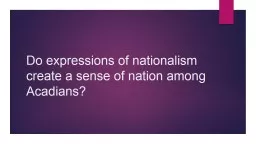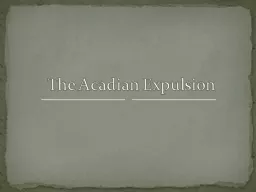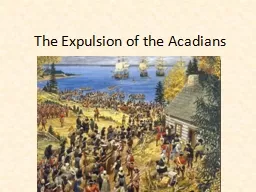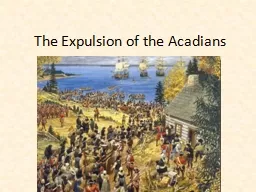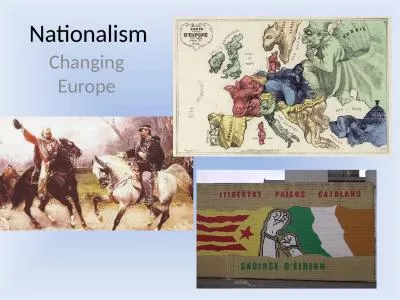PPT-Do expressions of nationalism create a sense of nation among Acadians?
Author : test | Published Date : 2019-02-27
Case Study 3 Expressions of Nationalism Among Acadians History of the Acadians In 1713 as a result of the Treaty of Utrecht the French colony of Acadia became
Presentation Embed Code
Download Presentation
Download Presentation The PPT/PDF document "Do expressions of nationalism create a s..." is the property of its rightful owner. Permission is granted to download and print the materials on this website for personal, non-commercial use only, and to display it on your personal computer provided you do not modify the materials and that you retain all copyright notices contained in the materials. By downloading content from our website, you accept the terms of this agreement.
Do expressions of nationalism create a sense of nation among Acadians?: Transcript
Download Rules Of Document
"Do expressions of nationalism create a sense of nation among Acadians?"The content belongs to its owner. You may download and print it for personal use, without modification, and keep all copyright notices. By downloading, you agree to these terms.
Related Documents

